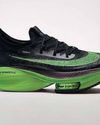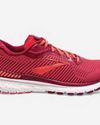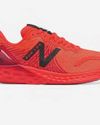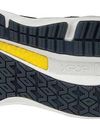JOHN SHEPHERD ON PERIODISATION AND GETTING YOUR ‘RECIPE’ RIGHT

THE recent IAAF World Indoor Championships was the pinnacle of the indoor season for many of the elite. Many, not all.
Quite a few athletes will not have targeted the Birmingham event, nor will they have had a significant indoor season or indeed one at all. In many ways doing an indoor season (or not) reflects the short, medium and long-term development of that particular athlete and, notably, their and their coach’s approach to periodisation (training planning) and peaking.
In terms of periodisation there are various models that can be used. You can think of periodisation as a recipe, where all the ingredients of training (weights, plyometrics, speed, endurance, technique work and so on) are mixed together to produce optimum competition performance when it matters. That is, the identified peaks for major competitions. Some approaches forgo the indoors in the aim of achieving a superior peak/peaks in the summer. And of course there are events where it’s difficult or impossible to have an indoor season in any case – such as the hammer, discus and javelin, the long hurdles and the longer distance races – although the latter can of course run cross-country or on the road.
What’s known as “traditional” periodisation, developed out of the former Eastern Bloc nations over 50 years ago, here typically one, two or three peaks are aimed for across the training year after district preparatory phases.
The USSR and GDR, for example, had research that indicated that for events, such as the high jump and sprints, a double periodisation (two peak) programme would bring elevated performance compared to a single periodisation (one peak) approach. Why? Well, quite simply with a double (or triple periodisation approach) the athlete does more specific and competition specific training.
This story is from the {{IssueName}} edition of {{MagazineName}}.
Start your 7-day Magzter GOLD free trial to access thousands of curated premium stories, and 9,000+ magazines and newspapers.
Already a subscriber ? Sign In
This story is from the {{IssueName}} edition of {{MagazineName}}.
Start your 7-day Magzter GOLD free trial to access thousands of curated premium stories, and 9,000+ magazines and newspapers.
Already a subscriber? Sign In

Carbon Footprint
You'd have had to have been running on a different planet to miss all the recent debate about carbon-plated shoes. The talk of bans and performance enhancement has been so widespread that even non-runners are asking their running friends about the potentially magical footwear.
Trail time
WHEN looking for a trail or off-road running shoe, it’s often all about the grip. However, given that no two paths are the same, careful consideration is required. What’s the terrain like where you’ll wear the shoes the most? If you’ll be negotiating soft, wet and muddy conditions then look for deeper lugs. For tackling gravel tracks and forest trails then more evenly spaced lugs will work better. When it comes to cushioning, consider how hard the ground will be; if it’s soft then you’ll be fine in low-profile shoes, but on those firmer tracks reasonable cushioning will be called for.

Stay neutral
EVOLVING every year, if not month, neutral cushioned shoes are seeing developments in cushioning materials and dynamics at a pace which is nothing short of astonishing. The latest models feature new polymers in the midsoles to give them a cushioned feel while at the same time keeping their weight to a minimum. Give them a spin and choose the most comfortable for mile after mile of shock absorbing running.

Support network
WHEN it comes to ‘over-pronation’, a common question is ‘how much is over?’. With no hard and fast rules, it’s best to choose a shoe that instinctively feels right. Gait analysis can often assist in helping you make this choice and your specialist running store is always a good place to start if in doubt. To help you make that choice, here’s a selection of some of the best ‘support’ shoes around.

Need for speed
THE racing shoe segment of the market is becoming somewhat split. This is partially due to the rise of carbon-plated footwear but also the fact that many shoes are becoming much lighter. Here we take a look at some of the leading contenders to toe the line in.
Gadget show
WITH technological products to enhance every area of life, running is now no different. From headphones to treadmills, the devices to aid performance and recovery are endless. Here we take a look at some of the latest gadgets and gizmos to enhance your training.

What's in a shoe?
We bust some of the jargon around footwear

How To Prime Your Immunity
Taking steps to shore your body’s defences has never been more important. Here’s how to do it, says Peta Bee

English Schools Survival At Stake
Covid-19 could lead to ESAA losing thousands this summer

Covid-19: Athletics Events Are Wiped Out
Unprecedented calendar changes due to Covid-19